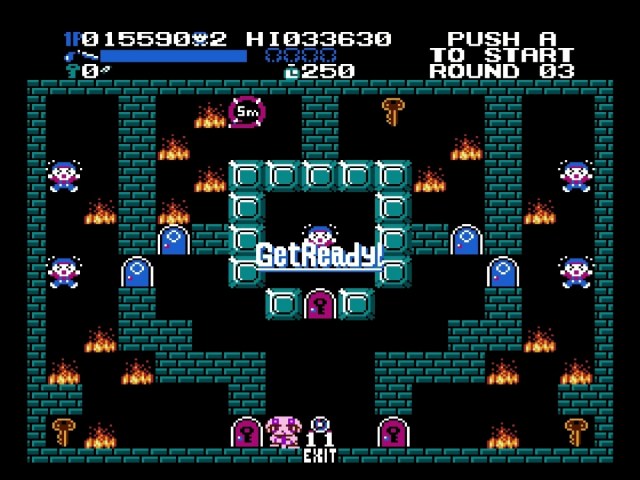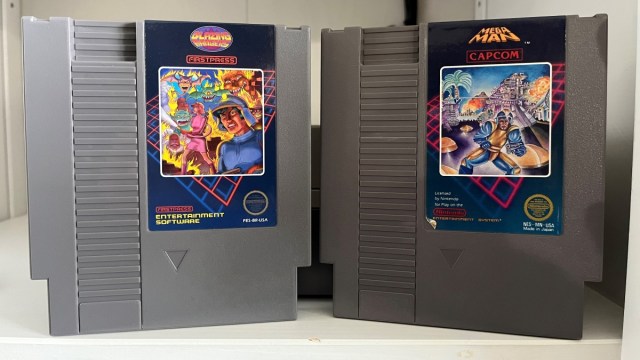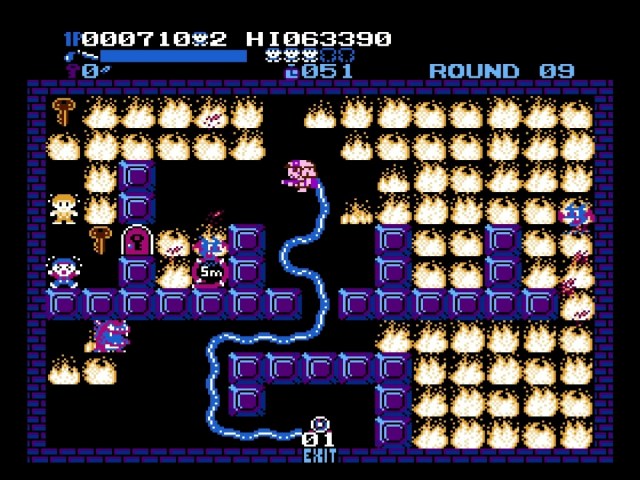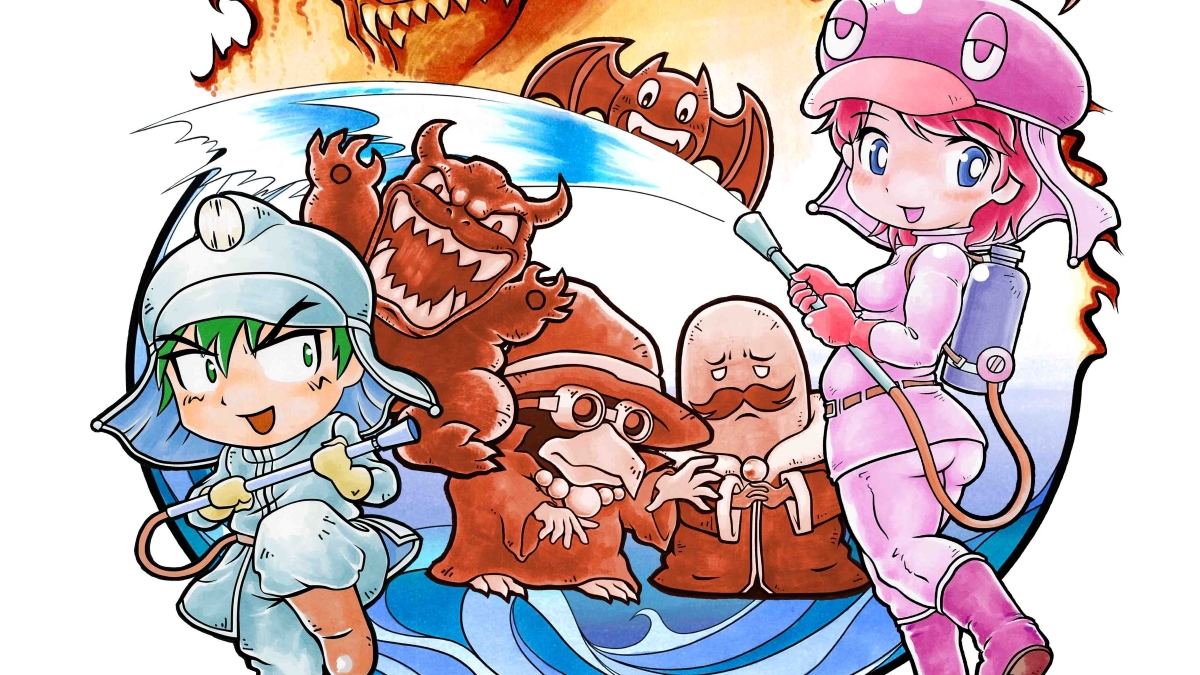Fire in the disco!
Homebrew games have come a long way, and it’s looking like they might actually be a viable, albeit limited, business model. Boutique publishers have been testing the waters for a while, and we’ve gotten some good ones that play on their intended hardware. It’s an exciting time for someone as affectionate towards old consoles as I am. Though perhaps not for someone as financially strained as I am.
First Press Games was willing to help out and actually sent me a physical copy of one of their NES titles, Blazing Rangers. I know what you’re thinking, but on the plus side, not only do I get to tell you about the game itself, but I can also let you in on the quality of First Press Games’ products. I’m excited. Are you excited?

Blazing Ranger (NES)
Developer: Karu_gamo
Publisher: First Press Games
Released: Late 2021
MSRP: $12.99 (Digital), 54.99€ (Physical)
I want to talk about the game itself because it’s particularly interesting to an NES nerd like myself. Blazing Rangers is designed by Karu_gamo, who has worked with Yuzo Kushiro’s company Ancient on games like Gotta Protectors. Working on games that already were in the Famicom aesthetic inspired them to actually learn the hardware, which lead to Blazing Rangers.
Not only is Blazing Rangers developed for Nintendo’s 8-bit hardware, but Karu_gamo took on the extra limitation of developing it for NROM restrictions, giving it 32k PRG space and 8k for CHR. This was one of the earliest mapper chips on the console, used for games like Super Mario Bros. and Balloon Fight. So rather than Metroid, which used MMC1, you’re looking more at the early arcade conversions like Donkey Kong.
Blazing Rangers fits that image perfectly, being a single-screen set-up that casts you as a firefighter. The screen gradually fills with flame, and your goal is to rescue the children scattered around, preferably before they get too crispy. You’re equipped with a spray gun and a length of hose. While connected to the hose, you spread more fire-quenching water, but your movement is slowed. You also only have a certain length of hose, which can be expanded by picking up items in the environment. While you’re off your leash, you have a limited supply of water, but can pump it back up.
A lot of strategy is created through these simple mechanics. You can’t put the fire out entirely, but by carefully managing it, you can make getting around much easier. That’s not always the best option, however, as enemies wander about the blaze. Sometimes your best bet is to just clear a direct path and try to get back to safety as quickly as possible. Be careful, however, as you’re slowed down depending on how many children you’re carrying on your back. Make sure to remember to head back to the start to drop them off safely.
NROM Restrictions
I was surprised by how much I enjoyed Blazing Rangers. Not that I expected it to suck, but I have a difficult relationship with arcade-style titles. I prefer progression to chasing score. Not only that, but I’m not a newcomer to the homebrew scene, and I’m accustomed to games that are clearly a developer’s first project and contain all the usual missteps and mistakes. Blazing Rangers demonstrates none of that and has a level of polish that sets it above a lot of the early Famicom titles that inspired it.
Beyond that, however, it’s extremely fun to play, and its concept is both unique and effective. With a modern-day mindset, single-screen games are something of a challenge to come up with concepts for. Despite what seems like an easy framework, it’s actually simpler to create new beat-’em-ups, shoot-’em-ups, or platformers. Blazing Rangers pulls it off admirably. There are 32 levels (with an end screen), a limited number of continuous, and a two-player co-op mode. If it came out in the early days of the Famicom, it would easily stand shoulder-to-shoulder with games like Devil World and Balloon Fight.
There are some downsides to the self-imposed limitations, however. Particularly, there isn’t much visual variance. The sterile brickwork and black backgrounds that you see on the first stage are carried all the way throughout. Likewise, while the impressive soundtrack is handled by Hydden, it is repeated for the entire runtime. Again, these are drawbacks directly linked to its use of the NROM mapper, but they should be kept in mind.

Famicom Fire Police
As for the physical product itself, a lot of effort has gone into making it look and feel like an official release. While the lack of official markings make it clear that the cartridge is a reproduction, the look and feel of it are extremely close to the authentic product. Even the box and manual follow the standard format, right down to including a chunk of styrofoam beneath the cartridge itself. It’s obviously not meant to fool anybody, but fans of the hardware will no doubt appreciate the effort that has gone into the small details.
You can purchase Blazing Rangers in two NES versions and a Famicom one. The NES carts come in North American and European flavors, mimicking the look of early Capcom and “Bienengräber” artwork, respectively. Meanwhile, the Famicom version is specifically modeled after Konami’s distinct approach to packaging and cartridge design. The Famicom version was extremely tempting, as it’s perhaps the most visually appealing, but I went for the North American one in the end.
Likewise, there is a selection of collector’s editions. All of these are available in limited quantities, which I’m not a fan of, but that tends to be how this market works. If you’re not interested in a physical copy, you can grab the ROM off itch.io.

What’s new is old
The whole “new games on old hardware” scene is extremely exciting to me, and Blazing Rangers is the embodiment of how it can be done well. While the concept is new, the limitations it uses and the influences it’s taken allow it to fit in with the era it mimics. It’s certainly not the only example of it, but it’s definitely a great demonstration of it. I can only hope that it helps stoke the flames of this niche market.
Blazing Rangers itself is both fun and addicting; traits that are important to a game of its style. Unfortunately, it hasn’t fully broken me of my aversion to the more arcade-style formulas of yesteryear, but it did manage to captivate me in short bursts. I’m also more likely to pull it off my shelf compared to say, Clu Clu Land or Ice Climbers. I’m hoping Karu_gamo follows through to another classic-hardware game because they have shown off some impressive chops with this one.
[This review is based on a retail build of the game provided by the publisher.]


